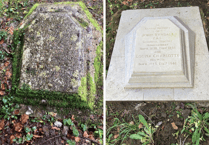HAMPSHIRE County Council officers have recommended that councillors grant planning permission for a fiercely contested waste incinerator in the rural Wey valley at Alton.
Veolia’s planned ‘energy recovery facility’ is set to be determined by Hampshire County Council’s regulatory committee in Winchester on Wednesday, February 23.
Ahead of the meeting, county planning officers published their report to councillors on Tuesday, recommending planning permission be granted “subject to confirmation that the Secretary of State does not intend to call-in the application for determination”.
The report – signed off by Hampshire’s assistant director of waste, planning and environment James Potter, who himself worked at Veolia as a general manager for materials recovery and recycling for two years between 2006 and 2008 – acknowledges the “complex” application has “attracted considerable public interest”.
This after Veolia’s proposal has dragged on through four public consultations, resulting in more than 5,500 objections from local residents and businesses, backed by two MPs, three district and borough authorities, two town councils and 19 parish councils.
CPRE Hampshire, the South Downs National Park Authority and Historic England have also submitted strong objections – as has Hampshire County Council’s own landscape department.
But despite this overwhelming opposition, the report states the proposal will “allow residual waste, which cannot be reused or recycled to be managed at the most reasonable level of the waste hierarchy, diverting it from landfill”.
As well as having the capability to accept 330,000 tonnes of waste per annum, Veolia says its facility will be able to generate 30 Mega Watts (MW) of energy as well as generating “heat offtake to potential future local developments”.
And the officers’ report also hails this generation of energy from waste as “an essential intermediate technology which will deliver savings in carbon emissions when compared to current waste management practice such as landfilling”.
Officers concede “not all impacts, such as visual impacts of the development, can be fully mitigated”.
But addressing local concerns, the report continues: “Significant environmental effects to local air quality and public health, noise and vibration, dust, litter, ecology, rights of way, airport safety, odour, ground contamination, drainage and flood risk or socio-economic effects are not anticipated through the work undertaken on the application and the conditions proposed.”
In conclusion, the report recommends the application be granted approval on February 23 subject to a raft of conditions, which also includes the installation of a Automatic Number Plate Recognition (ANPR) camera at the A31 Hen and Chicken Inn junction, provision of connections to enable the export of heat from the facility, a Landscape Management Plan and “a number of ecological improvements and enhancements”.
The report can be viewed in full online at: https://democracy.hants.gov.uk/documents/s91221/Report%20and%20Appendix%20A%20-%20Conditions.pdf
More to follow in this week’s Herald, on sale Thursday...




